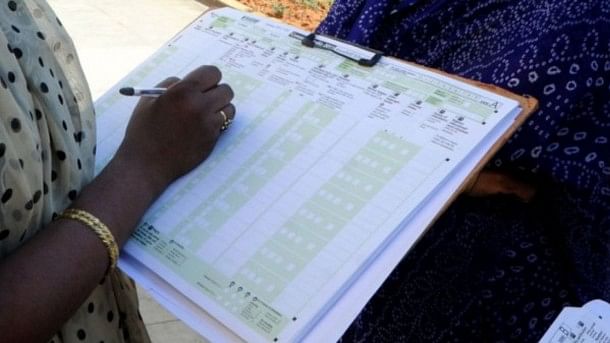
Representative image of census.
Credit: iStock Images
Around 80 per cent of India’s population belongs to Other Backward Classes (OBC), Scheduled Caste (SC) and Scheduled Tribe (ST) communities, who were excluded and discriminated against by dominant castes across the country. Most of the resources and wealth are accumulated and controlled by the dominant castes due to cultural supremacy, which allows them to access political power. In contrast, marginalised communities were denied opportunities, excluded from temples, and denied access to water, education and other public institutions.
Conducting a caste census can serve as an alternative model of development to reduce economic disparities and provide equal opportunities for backward and marginalised communities. Although the census falls under the Union list, states like Karnataka and Bihar conducted caste-based census despite political differences with the central government. The caste-based census in Bihar revealed issues such as unemployment, illiteracy and socio-economic conditions of backward communities.
The Karnataka government, under Chief Minister Siddaramaiah, announced a caste-based census in 2015 under the then state backward commission chairman Kantharaju. After conducting a census across the state, the commission submitted the report in 2018. However, the state government has neither accepted the report nor made it public.
Politically, socially and economically, the Lingayats and Vokkaligas have historically enjoyed the advantages of being dominant castes. Now, they, along with BJP leaders, are opposing the initiative to conduct a caste-based census.
The main reason for opposing the release is the fear that their caste percentage may be lower than currently projected, leading to a loss of socio-economic benefits. As per undisclosed reports, Dalits account for 19.5% and Muslims make up 16%, relegating the Lingayats to 14% and Vokkaligas to 11%. This would mean that if corrective measures are taken up by the government, the Lingayats and Vokkaligas could lose substantial benefits they have been enjoying.
Karnataka is home to about seventy million people, hosting around 1,500 castes and sub-castes. According to the Karnataka State Commission for Backward Classes, the census involved administering a questionnaire with 55 questions. The entire exercise was carried out in 45 days, with surveyors visiting 1.35 crore households to verify individual caste certificates, school records or documented references bearing caste details. The total cost of this exercise was estimated at Rs 160 crore. The findings may be extrapolated to determine the representation and numbers of different communities.
In a state known for progressive backward class movements, including AHINDA — which includes minorities, Dalits, Adivasis and OBCs, and is spearheaded by Chief Minister Siddaramiah — it becomes essential to publish the caste census as it will provide an opportunity to look at the population of different castes and set the anomalies right in terms of providing educational and job opportunities.
It is necessary to identify the creamy layer and remove them from continuing to enjoy the benefits of reservation, thereby providing opportunities to those who have not benefited. The idea of a welfare state is to distribute resources equitably among its citizens. However, the appropriation of resources by the elites among the upper castes and OBCs has hindered the very idea of equal access to state resources by all sections of society.
The judiciary in India has voiced its support for conducting caste-based censuses to make the best use of reservation, but the executive branch has not been in favour of this exercise. Without any reliable data, the 10% reservation for economically weaker sections was implemented.
The Global Multidimensional Poverty Index of 2021 states that nearly 33% of India’s Scheduled Caste population lives below the poverty line. In 2018-19, the Bihar government diverted Rs 8,800 crore of designated scholarship amounts for SC/ST students to other projects like roads, medical colleges and government buildings. Such anomalies could be corrected and tailor-made welfare measures could be implemented to benefit the marginalised castes if we have nearly accurate data.
Along with the caste census, gender justice should also be addressed to correct historical injustices faced by women in underprivileged communities, who have continued to struggle in all spheres due to a lack of adequate representation.
It is the dream of every Indian to transform the country. Two great tools for realising this dream are education and technology, which are not accessible to certain sections of our society. By identifying these sections through the caste census, policymakers can bring about a change in making this country more equitable in terms of sharing its resources by identifying the fault lines and mainstreaming the marginalised.
(Newman is Principal, St Joseph’s Evening College (Autonomous), and associate professor, Dept of History; Kumar, is Head, Department of International Relations, Peace and Public Policy, St Joseph’s University)